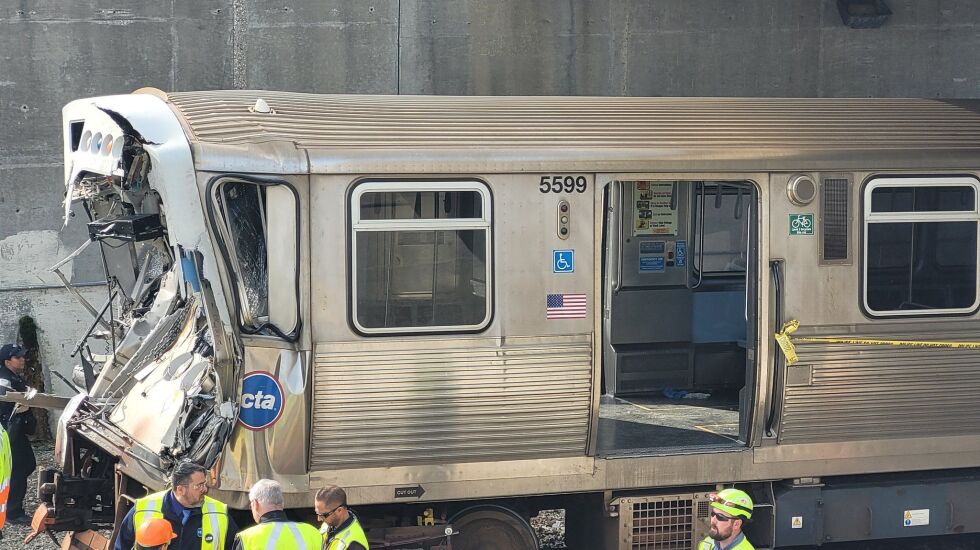
CTA passengers are already fed up with dirty vehicles, slow service, “ghost buses” and crime. If the transit agency wants to keep its sights trained on keeping loyal riders, it can’t operate on the track it’s been teetering on.
The latest setback involves safety, or the absence of it. A Yellow Line train collided with a snow plow near the Howard station Thursday, injuring 38 people.
Officials have yet to say if the operator was notified about the snow plow beforehand or if he ran through a stop sign — if there was one at all — and why the train was on the same track as the maintenance equipment.
The National Transportation Safety Board, as part of its investigation, is also trying to determine why the train’s wheels slipped even as the operator was braking and whether debris on the tracks played a role in the crash.
What was immediately clear to the NTSB is the operator needed more time to brake than the train was designed for. This “design issue” is a key factor that led to the collision, NTSB Chairwoman Jennifer Homendy told reporters, citing the agency’s preliminary findings over the weekend.
The Skokie Swift train, which was traveling 26.9 miles per hour, should have been able to stop within 1,780 feet of the object in its path — the snow plow — but it didn’t.
The problem is the CTA has been using typical stopping distances for older trains that don’t reflect the newer, heavier L cars, Homendy said. “That’s essentially an old design,” she said.
The train that crashed Thursday needed 2,745 feet to halt.
The NTSB may take several months to deliver its full report on the wreck, which means it will be awhile before it recommends specific design changes to the CTA.
That doesn’t mean the CTA will necessarily heed the NTSB’s guidance.
Nearly 15 years ago, the NTSB recommended positive train control for all train systems in the country and specifically to the CTA in 2014 after a Blue Line train crashed into the terminal at O’Hare Airport.
Positive train control automatically stops a train if it runs a signal or slows it down if it’s speeding. The system was mandated for some train systems, such as Metra and Amtrak. The CTA got an exemption.
It’s reasonable to wonder if the system could have prevented the Yellow Line crash.
The CTA has said very little about last week’s wreck. Even so, the incident is poised to become another example of the transit agency’s woes, highlighting its shortcomings and failure to implement the latest technology.
The Sun-Times welcomes letters to the editor and op-eds. See our guidelines.







